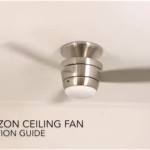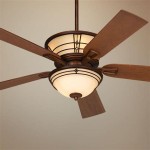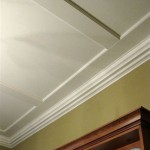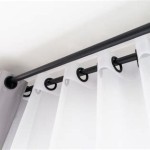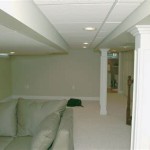Determining the Appropriate Ceiling Fan Size for Large Rooms
Selecting the appropriate ceiling fan size for a large room involves more than mere aesthetics. The dimensions of the room dictate the fan's blade span, which directly impacts its effectiveness in circulating air. Choosing the wrong size can lead to inadequate air movement, wasted energy, and diminished comfort. Conversely, an appropriately sized fan will optimize air circulation, contributing to a more comfortable and energy-efficient environment.
Large rooms, generally defined as those exceeding 400 square feet, present a unique challenge in terms of air circulation. Standard-sized ceiling fans, often suitable for smaller bedrooms or offices, simply lack the capacity to effectively move air throughout a larger space. Therefore, understanding the relationship between room size and fan blade span is crucial for making an informed decision. This article will explore the factors influencing ceiling fan size selection for large rooms, providing guidelines and insights to optimize air circulation and overall comfort.
Understanding Room Size and Blade Span Correlation
The fundamental principle guiding ceiling fan size selection is the correlation between the room's square footage and the fan's blade span. Blade span refers to the diameter of the circle the fan blades create as they rotate. A larger blade span moves a greater volume of air, making it suitable for larger spaces. Manufacturers generally provide recommendations based on room size, offering a starting point for determining the appropriate fan size.
For rooms ranging from 400 to 600 square feet, a ceiling fan with a blade span of at least 52 inches is generally recommended. However, this is a minimum guideline. In rooms with high ceilings or those prone to stagnant air, a larger fan may be necessary. For rooms exceeding 600 square feet, ceiling fans with blade spans of 60 inches or more are typically required to ensure adequate air circulation. Some rooms may even benefit from two smaller fans rather than one oversized fan, especially if the room's layout is irregular or obstructed by furniture.
It is important to note that these recommendations are based on standard ceiling heights (typically 8 to 9 feet). If the ceiling height is significantly higher, a longer downrod may be necessary to position the fan blades closer to the occupied space. The downrod ensures that the airflow is directed where it is most needed, maximizing the fan's effectiveness.
Factors Beyond Square Footage: Ceiling Height, Room Layout, and Fan Placement
While square footage provides the primary basis for selecting a ceiling fan size, other factors significantly influence the fan's performance. Ceiling height, room layout, and fan placement all contribute to the overall effectiveness of air circulation. Ignoring these variables can result in suboptimal performance, even with a fan that technically meets the size requirements based on square footage alone.
Ceiling height plays a crucial role in determining the appropriate downrod length. As mentioned earlier, higher ceilings necessitate longer downrods to bring the fan blades closer to the occupied space. Without a proper downrod, the airflow may be dispersed before reaching occupants, reducing the fan's cooling or heating effect. Generally, for ceilings between 9 and 10 feet, a 12-inch downrod is recommended. For ceilings between 11 and 12 feet, an 18-inch downrod may be necessary. Consult manufacturer guidelines for specific recommendations based on ceiling height and fan model.
Room layout also affects air circulation. Rooms with irregular shapes, alcoves, or obstructions such as large furniture pieces may require multiple fans to ensure even air distribution. In such cases, strategically placing smaller fans in different areas of the room can be more effective than relying on a single, oversized fan. Consider the placement of furniture and architectural features to identify areas where airflow may be restricted. Adjust fan placement accordingly to maximize air circulation in these areas.
Fan placement within the room is another critical consideration. Ideally, the fan should be positioned in the center of the room to maximize its coverage area. However, this is not always feasible, especially in rooms with unique layouts or architectural constraints. When centering is not possible, consider placing the fan in the area where it will have the greatest impact on air circulation. For example, placing a fan near a seating area or workstation can provide localized cooling or heating benefits. Additionally, ensure that the fan blades are positioned away from walls and other obstructions to allow for unobstructed airflow.
Beyond Size: Motor Performance, Blade Pitch, and Energy Efficiency
Selecting the appropriate ceiling fan size is only one aspect of optimizing air circulation and energy efficiency. Motor performance, blade pitch, and overall energy consumption also play significant roles in determining a fan's effectiveness. A powerful motor, properly angled blades, and energy-efficient design contribute to superior airflow and reduced operating costs.
Motor performance is directly related to the fan's ability to move air. A more powerful motor generates greater airflow, resulting in improved cooling or heating effectiveness. Look for fans with motors rated for high CFM (cubic feet per minute), which indicates the volume of air the fan can move. DC (direct current) motors are generally more energy-efficient and quieter than AC (alternating current) motors, making them a popular choice for modern ceiling fans. While DC motors may have a higher initial cost, their long-term energy savings can offset the difference.
Blade pitch refers to the angle of the fan blades. A steeper blade pitch allows the blades to "grab" more air with each rotation, resulting in greater airflow. However, a steeper blade pitch also requires more power, potentially increasing energy consumption. The ideal blade pitch is a balance between airflow and energy efficiency. Look for fans with blades designed for optimal airflow without excessive energy consumption. Some manufacturers offer fans with adjustable blade pitches, allowing you to customize the airflow to your specific needs.
Energy efficiency is an increasingly important consideration when selecting a ceiling fan. Look for fans with the Energy Star label, which indicates that they meet strict energy efficiency guidelines set by the Environmental Protection Agency (EPA). Energy Star-certified fans consume significantly less energy than standard fans, reducing your electricity bills and minimizing your environmental impact. In addition to the Energy Star label, consider the fan's overall energy consumption, which is typically measured in watts. A lower wattage rating indicates greater energy efficiency.
Furthermore, consider the fan's features, such as remote control operation, multiple speed settings, and reverse function. Remote control operation allows you to easily adjust the fan's speed and direction from anywhere in the room. Multiple speed settings provide greater control over airflow, allowing you to customize the fan's performance to your specific needs. The reverse function allows you to reverse the direction of the fan blades, which can help to circulate warm air during the winter months, reducing your heating costs. By considering these factors in addition to size, you can select a ceiling fan that provides optimal comfort, energy efficiency, and convenience for your large room.
In conclusion, selecting the appropriate ceiling fan size for a large room requires careful consideration of various factors, including square footage, ceiling height, room layout, motor performance, blade pitch, and energy efficiency. By understanding these factors and following the guidelines outlined in this article, you can choose a fan that provides optimal air circulation, comfort, and energy savings for your large room.

Ceiling Fan Size Guide Delmarfans Com

How To Select The Right Size Ceiling Fan Abq Electrical Blog

How To Choose The Best Ceiling Fan

How To Size A Ceiling Fan Indoors Or Out Lightstyle Of Orlando

Does Ceiling Fan Size Matter Spoiler Alert Yes It

Best Size Ceiling Fan For Your Great Rooms Hunter

How To Choose A Ceiling Fan Create The Perfect Personalized Cooling Space In Your Home

Need Help Choosing The Right Ceiling Fan Size

What Size Ceiling Fan Do You Need For Your Room Dan S City Fans Parts Accessories

Ceiling Fan Size Guide Delmarfans Com
Related Posts

